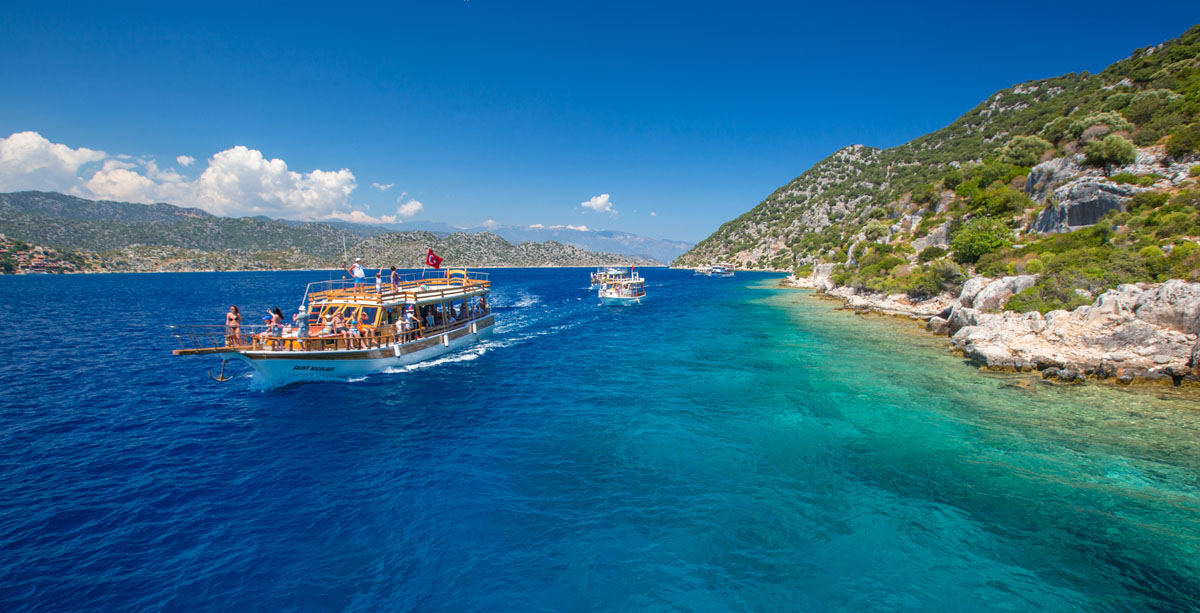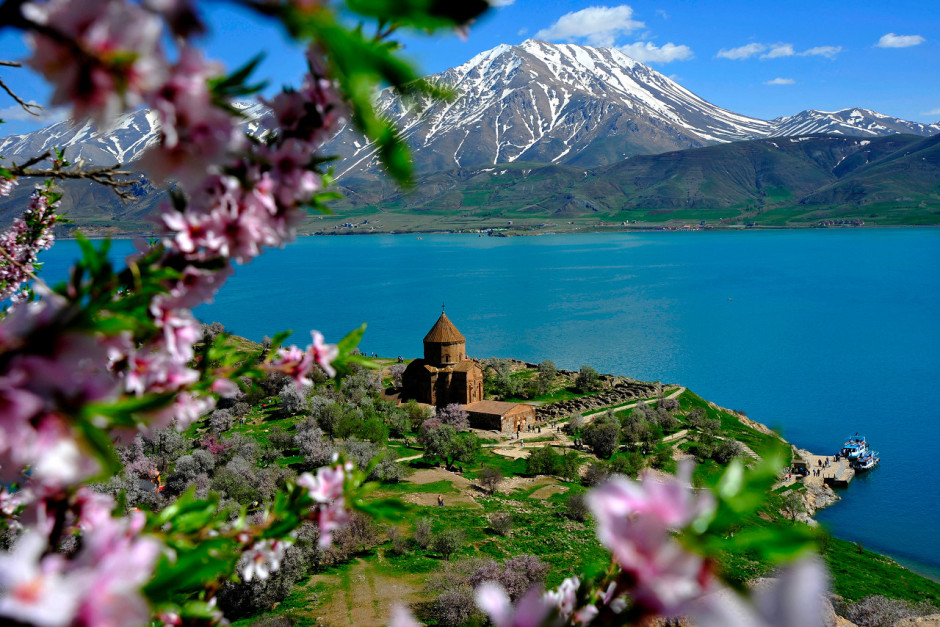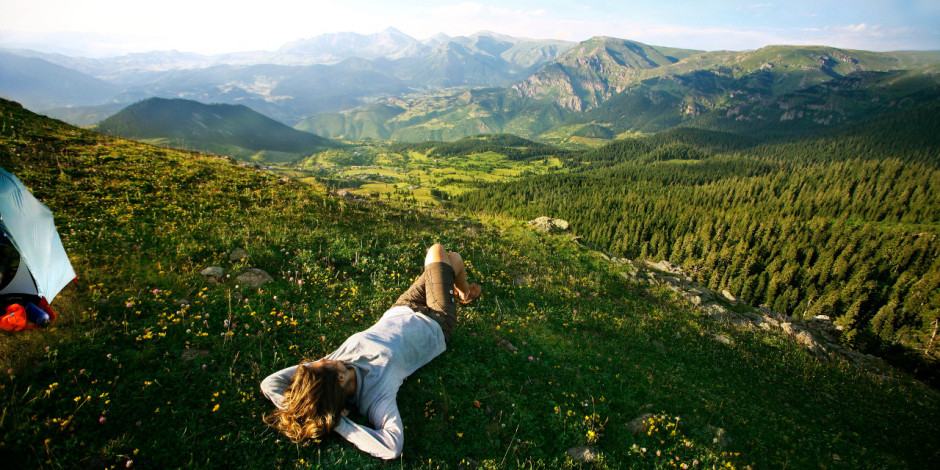HISTORY IN TURKEY RUNS DEEP. We’re talking incredible UNESCO World Heritage Sites, well-preserved ruins and art from pretty much every major civilization in the Ancient World — even the origins of civilization itself are rooted in Turkey. But that doesn’t mean a visit to this country bridging Europe and Asia, ancient and modern, has to be one big history lesson. You can spend all your time outside of museums, away from historical sites, and be equally blown away.
That’s because Turkey is also home to some absolutely gorgeous landscapes — from high mountains to powder-sand beaches and turquoise seascapes. If you’re into the outdoors and the scenic, here some spots to focus on.
1. Ölüdeniz

Photo: Scott Sporleder
One of the most attractive stretches of Turkey’s Turquoise Coast (and that’s saying a lot), the little beach town of Ölüdeniz sits just south of Fethiye, where the Aegean meets the Mediterranean. The pebbly beach swings westward in a gentle crescent, ending at a picturesque blue lagoon that’s protected as a nature reserve. In addition to just sitting back and enjoying this Blue Flag beach, you can also get into paragliding here — Mount Babadağ, just southeast of town, is one of the best launches in Europe — and scuba divers can take advantage of the especially clear water.
2. Cappadocia

Photo courtesy of the Turkey Ministry of Culture and Tourism
It’s easy to mistake fact for myth when talking about Cappadocia, an ancient kingdom in the Turkish heartland and now one of the country’s hottest tourist attractions, with a truly unique landscape. Around the town of Göreme and within the national park of the same name, ancient volcanic activity and subsequent erosion have created clusters of “fairy chimneys” (hoodoos, or rock pinnacles), caves, and intricately sculpted cliffs.
Even more spectacular than the formations themselves are the ways in which people have interacted with them over the centuries. Dwellings have been carved into the rock, early Christian churches were established among the hoodoos, and entire cities were established within the region’s cave systems. Visit today and you can sleep in a cave hotel and rise before the sun to go on a hot-air balloon ride over Cappadocia.
3. Lycian Way

Photo: Scott Sporleder
If you really want to get a feel for southwestern Turkey’s Mediterranean coast, you have a great option: Hike the 300-mile Lycian Way, which stretches from Ölüdeniz to just shy of Antalya. Opened in 2000 as the country’s first long-distance trail, it’s been ranked one of the “World’s Ten Best Walks” by the Sunday Times. The route has many inland sections but provides plenty of awesome sea views from ridges and mountains high above the water, and also passes through plenty of ruins. It takes its name from Lycia, an ancient kingdom based in the region as far back as the 15th century BC. Budget 20-30 days to walk the entire trail, or explore shorter sections on day hikes out of towns like Demre, Kaş, and Kemer.
4. Istanbul

Photo: Seqoya/Shutterstock
We humans certainly create our own landscapes, and few are as impressive as that of Istanbul. This celebrated city, the largest in Turkey, spans Europe and Asia — it occupies land on both sides of the Bosphorus Strait. Apart from this geographical fact, the defining features of Istanbul’s landscape come from is architecture, namely the minarets and domes of the Hagia Sophia and the Blue Mosque, along with countless other gorgeous and historic structures. Never mind the rich culture, incredible cuisine, and epic nightlife — Istanbul has some of the best rooftop views and sunset silhouettes on the planet.
5. Pamukkale

Photo courtesy of the Turkey Ministry of Culture and Tourism
At Pamukkale in Denizli Province, natural hot springs flowing for millennia down the slope of a small mountain have created a series of terraced pools formed of pure white travertine. The effect is magical and probably unlike anything you’ve seen before. The Ancient Greeks and Romans certainly thought so, constructing the city of Hierapolis at the top of the mountain and providing access to some of the world’s first tourists, who came to soak in the pools. Today, you can do the same.
6. Lake Van

Photo courtesy of the Turkey Ministry of Culture and Tourism
Turkey’s largest lake, covering 1,450 square miles with a maximum depth over 1,400 feet, sits in the southeast of the country. It’s one of the biggest lakes in the world classified as endorheic — it has no outlet — and thus registers a high salinity, limiting the amount of life contained beneath the waves. At its shore rises the 9,600ft volcano Nemrut, and four islands dot its surface. One of these, Akdamar, is the site of a 10th-century church, while the ruins of monastic facilities have been found on the other islands.
7. Kaputaş Beach

Photo courtesy of the Turkey Ministry of Culture and Tourism
Turkey has nearly 1,000 miles of Mediterranean coastline, so it isn’t hard to find your perfect beach. For many, that’s Kaputaş Beach. It lies 10 miles or so west of Kaş, at the outlet of a narrow valley, bookended by steep cliffs. The most attractive aspect of Kaputaş Beach is that there’s no development. You can expect to see vendors hawking food and drink, but the geography here has prevented hotels or other infrastructure from springing up to take advantage of this sweet stretch of sand on the Turquoise Coast.
8. Mount Ararat

Photo: MehmetO/Shutterstock
And now we return to legend. Mount Ararat, in far eastern Turkey not too far from Lake Van, is associated with the mountains named in the Book of Genesis as the landing place of Noah’s Ark following the flood. It makes sense, as the higher of the massif’s two peaks (Greater Ararat, 16,854 feet) is the tallest point in Turkey. As such, it dominates the landscape of the entire region, visible for dozens of miles in most directions. Its summit is covered by an ice cap year round, though it’s been observed to be gradually shrinking.
9. North Anatolian Mountains

Photo courtesy of the Turkey Ministry of Culture and Tourism
Much of the northern reaches of Turkey is defined by the North Anatolian Mountains (also known as the Pontic Mountains), a chain that meanders for more than 600 miles just shy of the country’s Black Sea coast. Different sections of the range have been home to different peoples over the millennia, resulting in a multitude of cultures today. Specific sections to check out include the scenic Fırtına (Storm) Valley in Rize Province, and Artvin Province’s Maçahel Valley.
But perhaps the most spectacular site is Sumela Monastery, in Trabzon Province. Built into a steep cliff face above the Altındere Valley, the monastery was founded in the 4th century AD and inhabited on and off through the centuries. Today, it exists mainly as a tourist attraction, the highlight of one of Turkey’s great landscapes.

